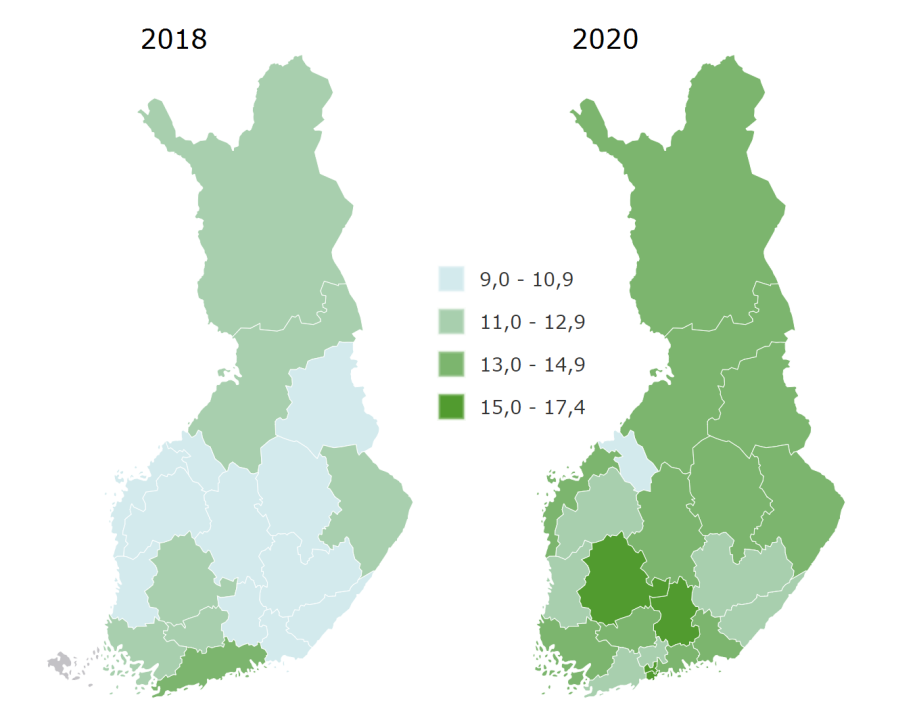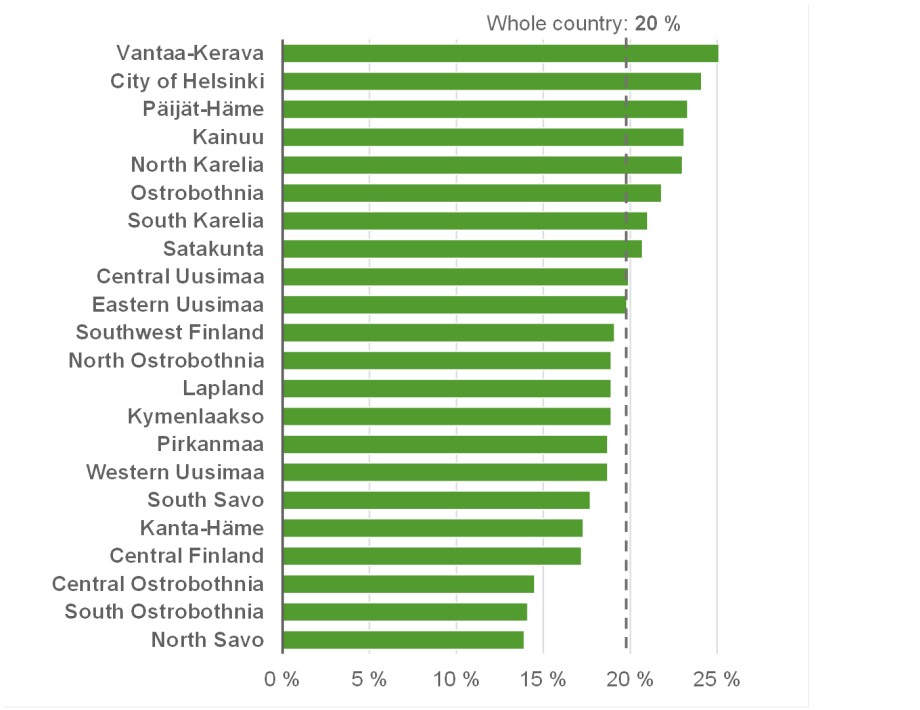Increase in psychological distress during coronavirus second wave
Psychological distress has increased during the second wave of the coronavirus epidemic in all parts of Finland. Distress has grown especially among those of working age. In 2020 14 percent of Finns reported psychological symptoms and distress. In 2018 the corresponding figure was 12 percent.
However, thoughts of suicide did not increase. In 2020 suicidal thoughts were more common among those of working age: One in ten people between the ages of 20 and 54 said they had experienced suicidal thoughts, as did 3 percent of those aged 55-74 and 2 percent of those aged 75 and over. The results are based on the recent National FinSote Survey by THL.
“With the increase in psychological distress, the use of mental health services by those aged 20-54 increased. Women seek help for mental health problems more frequently than men do. One positive change is that a larger proportion of men aged 20-54 who had experienced thoughts of suicide had sought help for mental health issues”, says THL research professor Jaana Suvisaari.

Fig. 1: Proportion of those with significant psychological distress (%) in 2018 and 2020 according to welfare area.
According to the FinSote Survey the percentages of residents with significant psychological distress were highest in Helsinki (17 %), Pirkanmaa (16 %), and in Päijät-Häme (15 %), and was lowest in Central Ostrobothnia (10 %). The use of health services for mental health problems was most common in areas where symptoms were the most common.
Psychological distress increased in Kymenlaakso, Päijät-Häme, Pirkanmaa, Central Finland, Ostrobothnia, and Kainuu. Contributing factors are apparently not limited to how difficult the epidemic situation has been in an area.
Access to health care services more difficult, especially in Helsinki region
During the coronavirus pandemic it has been more difficult to get an appointment with a doctor, nurse, and dentist. When comparing the situation in 2020 with that in 2018 the proportion of people who had not received adequate medical services increased both among both men (19% vs. 14%) and women (21% vs. 17%). Difficulties in getting health services grew most among men aged 20-54. Of them, 19 percent said that they had not received sufficient services considering their needs, while the corresponding figure in 2018 was 13 percent.
The greatest change was observed in dental services. Among adults needing dental services, 24 percent, about 550,000 of the entire population, say that they have been getting less dental care than they would have needed. In 2018 the corresponding figure was 19 percent.
Increased difficulties in getting an appointment with a doctor, nurse, or dentist appear to have focused on the areas worst hit by the epidemic. For example, in Uusimaa the proportion of those getting inadequate medical services was 16 percent in 2018 while the corresponding figure in 2020 was 22 percent. Access to health care services had also become significantly more difficult In Päijät-Häme and Southwest Finland.

Figure 2. The proportion of those getting inadequate medical consultation services among those who would have needed them according to welfare areas.
“The results are a cause for concern if people do not get the treatment that they need. Existing diseases can get worse and undiagnosed problems might not be noticed in time. Regional development suggests that the coronavirus epidemic has also made access to services more difficult. It is important to ascertain which population and customer groups have suffered especially from poor access to services, to make it possible to correctly target measures to fix the situation”, says Anna-Mari Aalto, Chief Specialist at THL.
FinSote 2020 Survey produces information on well-being and use of services by the population according to welfare areas
- National FinSote 2020 Survey was implemented between September 2020 and February 2021.
- Invited to take part in the study were 61,600 persons at least 20 years old, 28,199 of whom took part in it. The response rate was 46%.
- The topic areas of the survey were well-being, health, experiences of social and health care services, and electronic services for the population.
- The study helps follow the changes that have taken place in different population groups and in different areas.
- Information was collected through postal and online questionnaires.
- The results are reported once every two years.
References
The results according to region and population group (Terveytemme.fi, in Finnish)
The results are also available on the Sotkanet.fi online service
More information
Mental health:
Jaana Suvisaari
Research Professor
THL
tel. +358 29 524 8539
[email protected]
Health services:
Anna-Mari Aalto
Chief Specialist
THL
tel. +358 29 524 7252
[email protected]
FinSote survey:
Suvi Parikka
Development Manager
THL
tel. +358 29 524 7959
[email protected]



